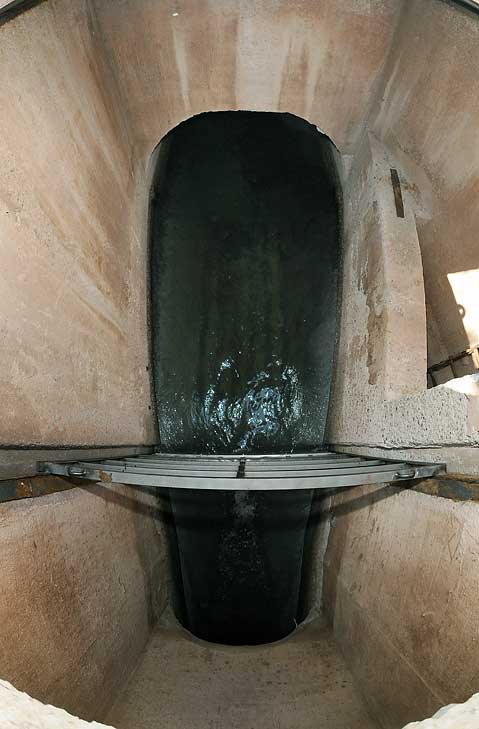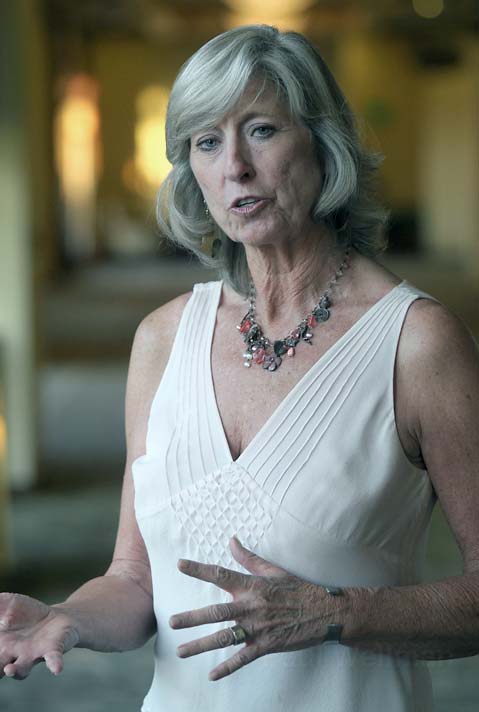Looking Down Both Barrels
Water Authorities Say South Coast Needs Another Pipe

The heat of the past week-and the inevitable fire danger that came with it-served as a stern reminder of the importance of a reliable water supply. Traveling nearly seven miles through the Santa Ynez Mountains in the Tecolote Tunnel and exiting near the top of Glen Annie Canyon north of Goleta, flow from Lake Cachuma provides Santa Barbara County’s South Coast with 80 percent of its water. Unfortunately, say water officials, the questionable reliability of having only one pipe running nearly 8,000 feet from the south portal of the Tecolote Tunnel-where Cachuma water exits the mountains-to Goleta’s Corona del Mar treatment plant creates a bottleneck that is difficult to overcome during high-demand summer months and leaves South Coast water customers vulnerable if the line is damaged by an earthquake, mudslide, or some other natural disaster.

The plan devised by the Cachuma Operations and Maintenance Board (COMB)-responsible for delivering water to South Coast water districts, including the City of Santa Barbara and the Goleta, Montecito, and Carpinteria Valley Water Districts-includes creating a second, 48-inch pipe in addition to the existing one. “That’s a reliability project and very needed,” said Das Williams, Santa Barbara city councilmember and COMB president. “In case of a disaster, we could be in real trouble without the second barrel.” But COMB has already hit a major roadblock in getting the project off the ground. The Carpinteria Water District Board of Directors, expressing concern about the financing of the proposed work, voted 4-1 last week to tentatively withhold supporting the project, and needs unanimous approval from all member agencies in order to pass the $16-million bond issue required to fund the so-called second barrel and a host of other necessary maintenance projects.
As it stands, repairs on the 8,000-foot pipe feeding the South Coast Conduit-the 26-mile-long water delivery pipe that runs from the Tecolote Tunnel to the Carpinteria Reservoir, servicing all South Coast water districts along the way-have to be performed during low-demand winter months, requiring sections of pipe to be isolated and possibly cutting off Cachuma water for days on end. Even fully operational, the bottleneck restricts flow during peak demand times, meaning that water authorities rely upon limited supplies at Lauro and Gibraltar reservoirs to keep peoples’ taps running. According to the County Public Works Web site, Gibraltar only has about 36 percent of its original capacity, the result of a combination of normal watershed runoff throughout the years compounded more recently by silt from the Zaca Fire burn area. But while water agency managers are in accord that a second pipe would be a prudent upgrade, there is disagreement about the urgency of the second barrel.

“We may or may not get this bond money, and if we don’t, we’ll have to find other financing, especially for the second barrel,” said COMB general manager Kate Rees. But by not securing the bond issue, she said that the COMB risks losing $23 million worth of Proposition 50 money currently earmarked for capital improvements. COMB does not have a reserve fund, and relies on member agency funding for repairs and upgrades. With many contractors hungry for work during the current economic downturn, Rees emphasized now as an ideal time to get good bids on construction projects. “Whatever bid you get [now] is a whole lot lower that you’re going to see in a year or 10 years,” said Glen Hille, an engineering consultant hired by COMB to sift through the laundry list of repairs and improvements needed and select the most crucial ones. At a September 1 workshop, he and Rees defended the second barrel and other upgrades as necessary, although a few skeptical Montecito Water District boardmembers wondered if peak demand problems can’t be solved without expensive construction projects.
The Carpinteria Water District, at the end of the line on the South Coast Conduit, has explained its provisional veto by citing the cost-sharing percentages laid out for South Coast member agencies to pay for the Cachuma Project when it was built in the 1950s by the U.S. Bureau of Reclamation. (Goleta pays 40.42 percent, Santa Barbara 35.89, Carpinteria 12.2, and Montecito 11.5.) Carp general manager Charles Hamilton called the breakdown unfair in terms of how COMB facilities are currently used by member agencies, with some transporting State Water Project resources through the same pipes without paying anything extra. He said the percentages ought to be changed to reflect that. Rees has proposed a comprehensive cost-sharing study to be conducted by an independent third party, but some members of Montecito’s and Carpinteria’s boards balked at the $80,000 price tag. The lone dissenting voice on Carpinteria’s board has been Bob Lieberknecht-its COMB representative and the district’s general manager during the three decades before Hamilton came aboard. Although Carpinteria’s staff indicated that their version of the cost-sharing formula would result in a gain of only $10,000-$30,000 per year, Hamilton said that during the 30 years it takes to repay the bond, the total amount would be significant. “We’ve been almost tarred and feathered by the public over any kind of rate increase, so we’re oversensitive to numbers like that,” said Lieberknecht, recalling customers who became irate last May when their already high water rates were increased.
The aging Cachuma Project-which includes Bradbury Dam, Tecolote Tunnel, the South Coast Conduit, and several reservoirs-has a number of maintenance issues that need to be addressed. Although Hille said the conduit itself is in decent shape, many of the valves and connectors that weren’t lined with concrete when they were installed are now corroded. The second barrel-the cost of which has been estimated at $9 million-appears to be the most significant upgrade requested, and COMB has asked for other improvements as well, including $2.5 million to repair a section of pipe in Mission Creek that was damaged by a boulder during a 1980s flood.
COMB’s bond issue proposal appears to have become an ideological struggle between those who want a reliable water delivery system and those who believe that the measures being proposed are heavy-handed and too vaguely defined. The latter argue that with several smaller reservoirs, healthy groundwater supplies, and Santa Barbara’s dormant desalinization plant all on the ocean side of the mountains, the South Coast has plenty of options should demand spike during a drought or the pipe become severed. “I don’t know how we can, in good conscience, go to our voters and ask them to approve $16 million when we don’t know how much it will actually cost,” said Dick Shaikewitz, Montecito’s board president.
The bidding process wraps up on September 10, and Carpinteria’s board has tentatively agreed to meet in concert with COMB on September 23 to further discuss cost sharing. Lauren Hanson, one of Goleta’s newest boardmembers, quietly offered her two cents at Tuesday’s workshop: “I think rate payers would question us more if we failed to be proactive about fixing things than they would if their rates went up.”



